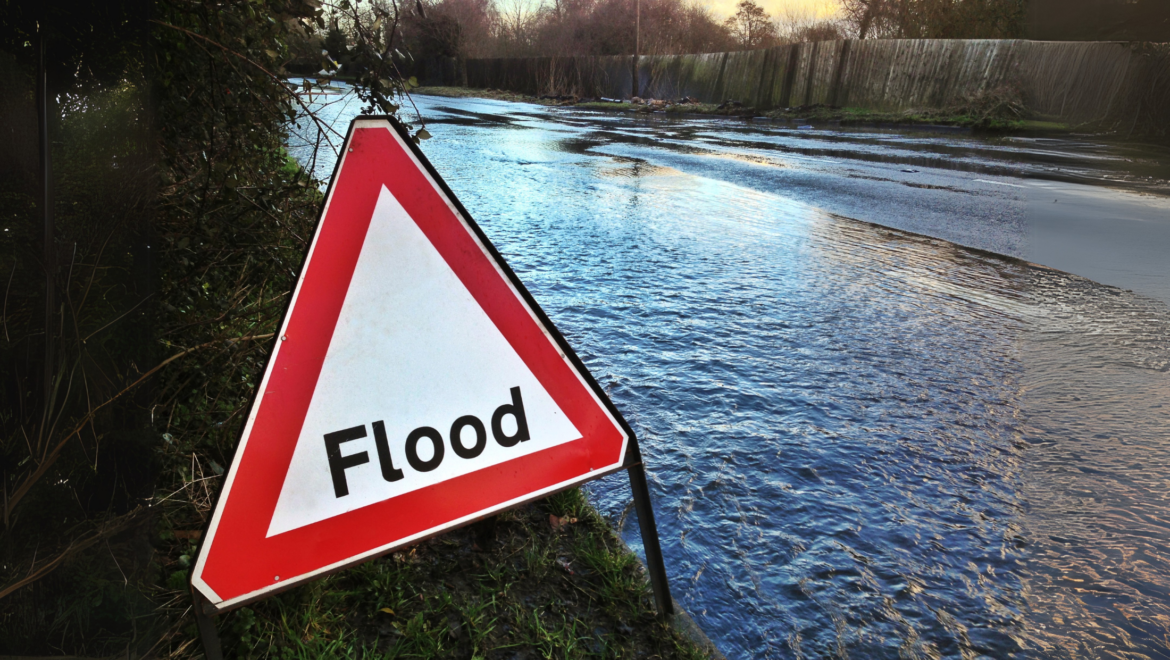Flooding in Ireland is no longer a rare or seasonal issue. With climate change accelerating sea-level rise, storm surges, and extreme rainfall, many of the country’s urban centres have become what scientists now call “sitting ducks” — dangerously vulnerable to climate-driven disasters yet spared so far by little more than luck.
A recent article from The Irish Times (June 9, 2025) sheds light on this growing concern in Ireland. It highlights Cork, Dublin, Galway, and towns along the Shannon as prime candidates for future disaster — unless we act now.
At Gamma Risk, we want to explore this topic further, sharing insights into why these areas are at risk and what practical steps can be taken to reduce exposure.
The Wake-Up Call from Storm Éowyn
In January 2025, Storm Éowyn brought storm surges of over 2.6 meters in Galway and 2.99 meters in Limerick — the highest ever recorded. Had it coincided with a spring tide, water levels could have exceeded 5.8 meters.
Entire districts and tens of thousands of people would have been affected.
This close call underscores how flooding in Ireland is becoming more frequent and more dangerous. Rising sea levels and heavier rainfall patterns are the main drivers. The near-miss should be a national wake-up call — and a call to action.
Why Cork and Dublin Are Among the Most Exposed
The Irish Times piece stresses how Cork is “very, very vulnerable”. Its central island layout and history of tidal flooding increase the risk. While the city has implemented creative flood mitigation solutions, including urban parks that transform into overflow basins, these adaptations face limits in built-up, space-constrained areas.

Heavy flooding on Winthrop street, Cork, in 2021. Photograph: Daragh McSweeney/Provision (source here)
Dublin faces different, but equally critical, risks. A significant portion of the capital’s essential infrastructure — including government buildings, transport hubs, and financial institutions — sits just a few metres above the River Liffey. Flooding could impact not only homes and businesses but also the country’s core operations.
The Shannon and the Growing Cost of Inaction
Flood risk isn’t limited to coastal cities. Regions along the River Shannon are often overlooked in national climate discussions. Yet, they could suffer some of the country’s highest economic losses. The Environmental Protection Agency (EPA) estimates that a single extreme flooding event in Limerick — under a high-end sea-level rise scenario — could cost more than €1 billion. That includes damage to property, infrastructure, business continuity, and emergency response.
Another challenge is the slow drainage of large river systems. When flooding occurs here, the effects last much longer than in catchments with faster water runoff, increasing the duration and scale of disruption.
Data and Modelling: Ireland’s Most Valuable Risk Too
Understanding and anticipating flooding in Ireland now requires more than weather forecasts. High-resolution modelling from institutions like the University of Galway’s analysis of Storm Éowyn reveals how rising seas, storm surges, and rainfall are converging in complex, high-impact ways. As seas rise and rainfall intensifies, storm surges, tides, and river flows interact in unpredictable ways.
This makes data-driven planning more critical than ever.
Investments in location-specific modelling and data-driven forecasting will be crucial. These tools enable better urban planning, more effective insurance coverage, and clearer communication during emergencies. The key is to translate climate data into real-world strategies, like asset elevation, stronger infrastructure, and supply chain resilience.
A Call for National and Local Action
Despite the wealth of available climate data, Ireland’s national planning still falls short. The European Commission’s recent review of the National Energy and Climate Plan criticised the lack of coherent adaptation measures. While risks are acknowledged, the proposed actions remain vague and poorly integrated.
Urban infrastructure, particularly in older cities, still relies on outdated assumptions about weather extremes.. Moreover, delays in deploying nature-based solutions — like wetlands, permeable surfaces, and adaptive green spaces — often stem from short-term disruption concerns rather than long-term resilience thinking.
Local and national bodies must act together using a data-informed approach. The Climate Change Advisory Council and the EPA’s National Risk Assessment already outline the “where” and “what.” What remains is the “how”, and that must happen faster.
Luck Isn’t a Strategy, Resilience Is
In summary, flooding in Ireland is no longer a distant or hypothetical concern. With sea levels rising and rainfall intensifying, cities like Cork, Dublin, and Galway sit on the frontlines of a growing climate emergency. The question isn’t whether these cities will flood — it’s how bad it will be, and how ready we are.
At Gamma Risk, we support organisations in quantifying the impact of flooding on property risk now and into the future using risk modelling data and through Perilfinder, our location intelligent platform. Contact our team to understand more about flood risk.
For deeper insight into how Ireland’s coasts and infrastructure are being impacted by climate change, explore our whitepaper: Coastal Flooding and Climate Change in Ireland
And stay tuned — we’ll be launching an updated version later in the Summer.


